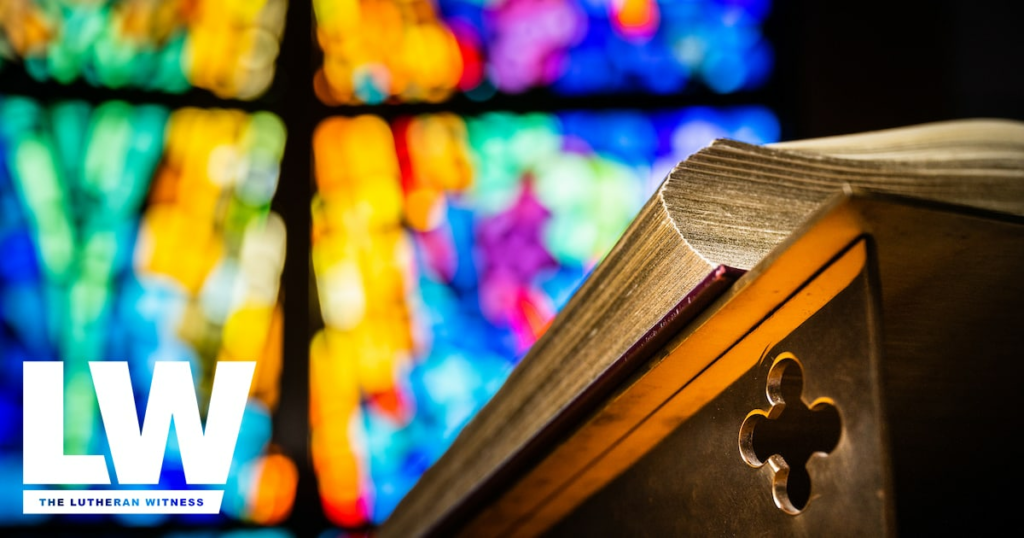by Rev. Dr. Greg Wismar
From vict’ry unto vict’ry His army He shall lead.” These familiar words from the first stanza of “Stand Up, Stand Up for Jesus” (LSB 660) are typical of the many expressions in the prayers, liturgies and hymnody of the Church that contain military images and references. The pages of the hymnal are filled with swords, banners, soldiers and armies. Both earthly armies and heavenly forces are sung of and spoken about in many ways.
In the “Prayer” section of Lutheran Service Book, a prayer for the “Armed forces of our nation” asks God to “strengthen and protect those who serve in the armed forces of our country” (LSB, p. 314). Another petition, titled “In times of war,” entreats the Lord that we “may be preserved from all danger and glorify You for the restoration of tranquility in our land” (LSB, p. 313). These petitions may be prayed both individually in private devotions as well as when God’s people are gathered together for worship.
The themes of war and peace have been part of Lutheran worship since the time of Martin Luther himself. His hymn “Grant Peace, We Pray, in Mercy, Lord” (LSB 777, 778), adapted from a sixth-century Latin text, was often sung immediately following the sermon in German churches in the Reformation era, sometimes appended to the classic Luther hymn, “Lord, Keep Us Steadfast in Your Word” (LSB 655). A different kind of martial image appears in the Matins service where, in the the Te Deum, we sing of the “noble army of martyrs” who praise God eternally in heaven (LSB, p. 223).
Many of the hymns that reflect the battles of the Christian life have come from times of struggle and conflict; others have been crafted in more peaceful times. One of the best-loved of all the hymns that versifies the topic of Christian warfare is “Onward, Christian Soldiers” (LSB 662). This text was written far from any sort of battlefield.
It was authored in by an English clergyman, Sabine Baring-Gould, to serve as the “marching song” for a procession of children at a springtime church festival in Yorkshire. Since the procession was headed by a cross and a banner, Rev. Baring-Gould incorporated a number of military images into his poetry. In the original second stanza of the hymn, one not usually included in hymnal versions of the song, he expresses a sense of unshakable faith and confidence as he writes: “At the sign of triumph Satan’s host doth flee; On then Christian soldiers, On to victory.”
About two decades after Baring-Gould penned his hymn for children, another Anglican clergyman, George Kitchin, wrote the words that put all of us into the marching line, in the hymn “Lift High the Cross” (LSB 837:1). Whether we are members of our nation’s military forces or not, we all have our “marching orders” as followers of Jesus Christ to join the “happy throng” that sings joyfully the “triumph song” of eternal victory (LSB 662:4).
—
- 8 1520 Martin Luther published his Open Letter to the Christian Nobility, laying the groundwork for the reformation.
- 21 1577 The Lutherans signed the Formula of Concord at Gotha, which confessed the Scripture as the only rule of faith and dealt with various doctrinal controversies.
- 31 1518 Martin Luther published his explanation of the 95 theses.
–dates courtesy Concordia Historical Institute
> To read prayers for military personnel, order Lutheran Book of Prayer at www.cph.org.
About the author: The Rev. Dr. Greg Wismar is pastor emeritus of Christ the King Lutheran Church, Newtown, Conn.
August 2012





